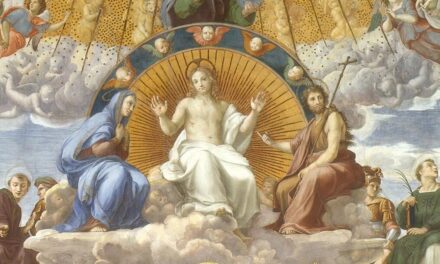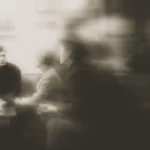In the vast tapestry of biblical prophecy, few passages captivate the imagination and stir theological discussions as much as Revelation 12. This chapter presents a vivid narrative filled with symbolism and prophetic visions that invite us to explore the depths of Christian theology and eschatology. Central to this passage is the figure of the Great Dragon, a powerful and malevolent force seeking to oppose the plans of God. In this article, we will delve into the rich symbolism and theological implications of the Great Dragon in Revelation 12, shedding light on its significance in the grand narrative of God’s redemptive plan.
The Great Dragon and the Woman Clothed with the Sun
3And there appeared another wonder in heaven; and behold a great red dragon, having seven heads and ten horns, and seven crowns upon his heads. 4And his tail drew the third part of the stars of heaven, and did cast them to the earth: and the dragon stood before the woman which was ready to be delivered, for to devour her child as soon as it was born.
—Revelation 12:3-4
Revelation 12:3-4 introduces us to the Great Dragon, a formidable adversary depicted with seven heads and ten horns. This image symbolizes Satan, the embodiment of evil and the primary antagonist throughout Scripture. The Dragon’s pursuit of the Woman, who is adorned with the sun, standing on the moon, and crowned with twelve stars (Revelation 12:1), represents the relentless opposition Satan directs towards God’s chosen people. The Woman signifies both the faithful remnant of Israel and the Church, while the symbolism of the sun, moon, and stars emphasizes their divine connection and significance in God’s redemptive plan. (Genesis 37:9; Matthew 19:28).
The Birth of the Male Child and the Dragon’s Wrath
5And she brought forth a man child, who was to rule all nations with a rod of iron: and her child was caught up unto God, and to his throne.
—Revelation 12:5
Verse 5 unveils the birth of the male child, representing Jesus Christ, the long-awaited Messiah. This event highlights the pivotal role of Christ’s incarnation, ministry, death, and resurrection in God’s redemptive plan. As the Dragon realizes the significance of this birth, it seeks to devour the child, foreshadowing Satan’s relentless opposition to God’s purposes. However, the child is caught up to God and His throne, signifying Christ’s victory over sin and death. This victory through the sacrificial death and resurrection of Jesus paves the way for humanity’s redemption. (Matthew 1:23; John 3:16).
The War in Heaven and the Defeat of the Great Dragon
7And there was war in heaven: Michael and his angels fought against the dragon; and the dragon fought and his angels, 8and prevailed not; neither was their place found any more in heaven. 9And the great dragon was cast out, that old serpent, called the Devil, and Satan, which deceiveth the whole world: he was cast out into the earth, and his angels were cast out with him.
—Revelation 12:7-9
Revelation 12:7-9 presents a cosmic battle between Michael, the archangel, and his angels against the Great Dragon and its angels. This spiritual warfare portrays the ultimate defeat of Satan and his forces, resulting in their expulsion from the heavenly realms. The triumph of Michael and his angels signifies the victory of God’s kingdom over the forces of darkness. This event echoes Jesus’ words in Luke 10:18, where He witnessed Satan’s fall like lightning from heaven. The defeat of the Great Dragon in the heavenly realm ensures the fulfillment of God’s redemptive plan on earth. (Luke 10:18; Jude 1:9).
The Persecution and Protection of the Woman
13And when the dragon saw that he was cast unto the earth, he persecuted the woman which brought forth the man child. 14And to the woman were given two wings of a great eagle, that she might fly into the wilderness, into her place, where she is nourished for a time, and times, and half a time, from the face of the serpent. 15And the serpent cast out of his mouth water as a flood after the woman, that he might cause her to be carried away of the flood. 16And the earth helped the woman, and the earth opened her mouth, and swallowed up the flood which the dragon cast out of his mouth. 17And the dragon was wroth with the woman, and went to make war with the remnant of her seed, which keep the commandments of God, and have the testimony of Jesus Christ.
—Revelation 12:13-17
Revelation 12:13-17 unveils a period of intense persecution against the Woman and her offspring. The Dragon, unable to harm the Child (Christ), turns its fury towards the faithful followers of Jesus. The Woman’s flight to the wilderness signifies the Church’s journey through challenging times, marked by persecution and tribulation. Despite the Dragon’s relentless pursuit, God provides protection and sustenance for His people in the wilderness. This divine provision ensures the preservation of the faithful remnant amidst adversity and strengthens their resolve to remain steadfast in their faith. (Psalm 91:1-4).
Differing Views and Denominational Perspectives
The interpretation of Revelation 12, particularly concerning the Great Dragon, varies among Christian theologians and denominations. Let’s explore some of the key perspectives:
- Preterist View: This view sees the events of Revelation as primarily fulfilled in the past, particularly during the time of the early Church. Preterists interpret the Great Dragon as a representation of the oppressive Roman Empire, viewing the fulfillment of these prophecies in historical events.
- Historicist View: Historicists regard the events in Revelation as unfolding over the course of history. They see the Great Dragon symbolizing various oppressive powers and institutions throughout different time periods, such as political systems, religious entities, or specific individuals who have persecuted God’s people.
- Futurist View: Futurists interpret Revelation, including the depiction of the Great Dragon, as primarily describing events that are yet to occur in the future, particularly during the end times. They see the Dragon as representing Satan and the rise of the Antichrist, emphasizing the eschatological significance of this passage.
- Symbolic or Spiritual View: Some theologians adopt a symbolic or spiritual interpretation of Revelation, considering the Great Dragon as a metaphorical representation of evil forces at work throughout history. They focus on the spiritual battle between good and evil, emphasizing the ongoing struggle faced by believers in every era.
Conclusion
In the intricate tapestry of Revelation 12, the figure of the Great Dragon stands as a powerful symbol of evil and opposition to God’s redemptive plan. Through its relentless pursuit of the Woman and her offspring, the Dragon represents the forces of darkness that seek to undermine the work of God in the world. However, Revelation 12 also presents a message of hope and victory, as the defeat of the Great Dragon is assured through the triumph of Christ. This passage serves as a reminder of the ongoing spiritual battle faced by believers and the ultimate victory that awaits those who stand firm in faith.
As we delve into the profound symbolism and theological implications of the Great Dragon in Revelation 12, let us approach the study with humility, guided by prayer and careful consideration of various theological perspectives. May our understanding deepen as we seek to align ourselves with God’s redemptive purposes and find strength in the victory secured by Christ over the powers of darkness.
Series
Unveiling the Significance of Revelation 12
A Journey into Revelation 12
Part 1
In the vast tapestry of biblical prophecy, the Book of Revelation stands as a remarkable and enigmatic piece, offering glimpses into the future and the ultimate fulfillment of God's divine plan.
The Great Dragon
Part 2
In the vast tapestry of biblical prophecy, the Book of Revelation stands as a remarkable and enigmatic piece, offering glimpses into the future and the ultimate fulfillment of God's divine plan.
The Woman and the Child
Part 3
At its core, this chapter centers around the Woman and the Child, two significant figures that carry great theological and eschatological implications.
The ArchAngel Michael
Part 4
Delve into the symbolism and theological depth of the Archangel Michael in Revelation 12, unraveling his significance within the context of God’s redemptive plan.
Time, Times, and Half a Time
Part 5
Explore the significance and theological depth of this phrase in Revelation 12, exploring its implications within the context of eschatology and God’s unfolding plan.
The Dragon's Pursuit of the Remnant
Part 6
Revelation 12 introduces us to the Dragon, a powerful and malevolent figure who seeks to devour the Woman’s child. Symbolically representing Satan, the Dragon embodies evil, deception, and opposition to God and His people.
















Recent Comments